Can I Use the iWALK Crutch?
Height? Weight? Age? Other?
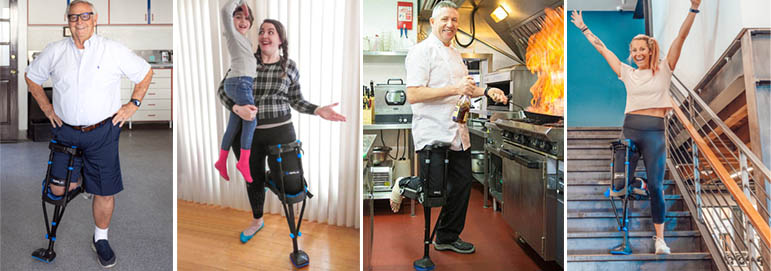
For most people with lower leg injury, the answer is YES!
How can I determine if I’m a good candidate for using the iWALK crutch?
While the iWALK hands free crutch works for most people, it isn’t for everyone. Before you decide to use the iWALK crutch watch the video below.
Still not sure? Take the online quiz below to determine if iWALK crutch will work for you:
Do you meet the requirements?
What are you waiting for? Stop suffering on crutches or scooters and start iWALKing!

Free 1-3 Day Delivery
to most locations
iWALK Crutch Qualifications for Use
Alternatively you can review the information below to determine if the iWALK is right for you and suitable for your injury.
Basic Physical Requirements:
Regardless of age, if you can pass these two physical ability tests, you should be capable of using the iWALK crutch.
- IF YOU CANNOT DO THE TWO FOLLOWING THINGS, THEN IWALK PROBABLY WILL NOT WORK FOR YOU.
- IF YOU CAN DO THESE TWO THINGS, CONTINUE AND READ THE REST OF THIS PAGE.

Stair Test
Before your injury, could you fluidly walk up and down stairs at a normal pace, without using a handrail?

Balance Test
Can you balance on one foot for a full 30 seconds?
You CAN use iWALK crutch if
the following applies to you

Compliance
- You commit to following our instructions for Fitting and Use BEFORE your first use
- You’re willing to spend at least 5-20 minutes to let your body learn and adapt to using the iWALK crutch

Pre-injury Ability
- You have average strength and balance
- Pre-injury, you could walk normally without a limp, shuffle, etc.
- Pre-injury, you could go up or down stairs without requiring a handrail for balance or support.

Capacity
- You are between 4’10” (147cm) and 6’6” (198cm) see chart for specific leg length limits.
- You weigh 275 pounds (125kg) or less. Click here to see why this matters.
- Maximum thigh circumference (at top of leg) is 28” (71cm) or less.
- You fall within the sizing requirements.

Other Requirements
- Your injury is to one leg only.
- Your injury is below the knee.
- You can bend your injured leg 90 degrees at the knee (casts and boots are OK)
- You have full functionality in your uninjured leg.
You CANNOT use iWALK crutch if
the following applies to you

Capacity
- You weigh over 275 pounds (125 kg) or are significantly overweight. Why does this matters?
- Your upper thigh circumference (at the top of your leg) is more than 28” (71cm).
- You do not fall within the sizing guidelines.

Pre-injury Ability
- You’re challenged by normal activities like walking, climbing stairs, etc.
- You cannot walk without an assistive device
- You lose your balance
- You must use the handrail to go up or down stairs
- You don’t have full use of your uninjured leg

Compliance
- You plan on trying the iWALK crutch on your own, without following our FITTING and USE instructions first. HINT – we’ve made it easy for you – so follow our instructions and don’t go it alone.

Other Requirements
- You cannot bend your injured leg 90 degrees at the knee.
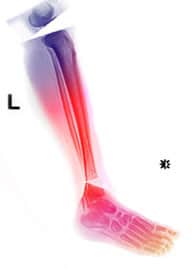
iWALK crutch works for these common lower leg injuries
Foot fracture, sprained ankle, broken ankle, Achilles tendon rupture, Achilles tendon injuries, bunions, tibia fracture, fibula fracture, Jones fracture, plantar fasciitis, stress fractures (lower leg), below knee amputation, foot and ankle dislocations, foot ulcers, calf muscle tear, calf muscle strain, gastrocnemius tear, almost any lower leg injury is indicated for use with iWALK crutch. iWALK is also a great way to keep your foot elevated after surgery or significant injury while still having mobility.
iWALK crutch does NOT work for these leg injuries
Any injury to the knee or above. So common conditions like ACL tears, MCL tears, patella conditions, dislocations, and other knee injuries, hamstring tears and strains, groin injuries, piriformis injuries, IT band issues, illiopsoas (hip flexor) conditions, diabetic ulcers where proprioception issues adversely affect balance or any other knee or above upper leg injury will all require another form of crutches or mobility aid.
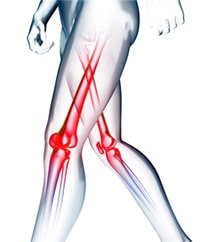

Age Limits
If you’re over 60, pay careful attention – iWALK crutch might not be for you. The iWALK has been used successfully by people in their 70’s and beyond, but we’ve also seen people in their early 60’s who couldn’t adapt. What we’ve learned is that as we age mobility capabilities vary greatly from individual to individual, so it’s difficult to put precise age limits on who can use the iWALK crutch. So instead of AGE LIMITS, we’ve found that ABILITY LIMITS work much better. So as long as you keep your expectations reasonable, and follow our ability guidelines, then age alone isn’t a governing factor in whether you can use the iWALK crutch.
ABILITY GUIDELINES- If you could walk with normal gait, unassisted prior to your injury, then you’re likely a good candidate for the iWALK crutch. Further, if you could go up or down stairs quickly, without requiring a handrail for balance or support, then you have the physical ability to succeed on iWALK crutch.
Go to the top of this page and review ALL of the requirements. If you meet them all, then you can be confident in using your iWALK crutch. If not, you should choose a different mobility device.

Plus Size
If you’re tall or short, underweight or overweight, green or blue, we’re not judging you. Let’s get that out of the way.
Body mass index plays an important part in how the crutch functions. This is because to the extent possible, you want the iWALK to become an integral part of your leg. This makes the iWALK behave as though it’s an extension of your actual human leg, which makes walking more natural and intuitive.
The iWALK recruits your upper thigh to stabilize the crutch. The more solid your upper thigh, the less unintentional movement of the crutch. We know that not everyone is a lean, elite athlete, and you don’t need to be. But as body mass increases beyond a certain point, it introduces more “compressible” flesh in the upper thigh area, which inhibits stability of the crutch.
In addition, larger thigh sizes reduce the adjustment range available for the vertical alignment of the crutch. Improper vertical alignment can reduce stability and efficiency of the crutch. The video below shows you why:
These are clinical, mechanical limitations of a one-size-fits-all product. Your safety and satisfaction are our first concerns, so if you’re plus size, it’s essential that you understand the limitations of the iWALK before you self-determine if it’s right for you.
The chart below gives general guidelines for height / maximum weight. Please understand that this chart is based upon statistical averages for body mass index among the adult population and is only a starting point in determining if your body mass will complicate or inhibit you from adapting to the iWALK crutch.
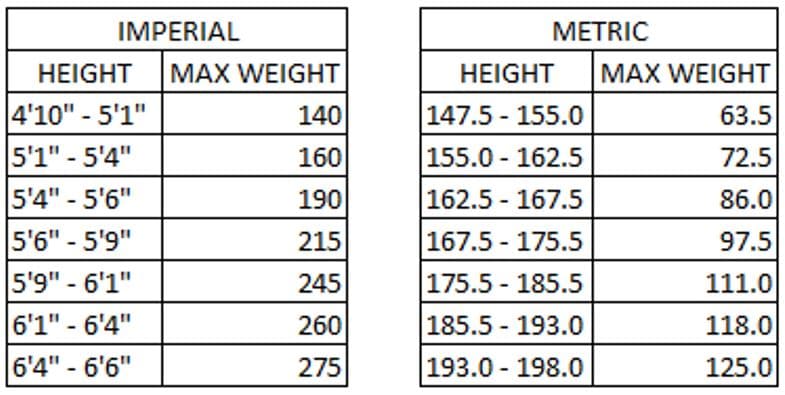
If you exceed the maximum for the chart above and are still interested, we strongly recommend you take our online quiz which covers all the factors that are important for self-determining if the iWALK is right for you.
For more sizing information, click here.

Back Pain / Back Conditions
Using the iWALK crutch causes minor gait adaptations that temporarily alter the way you use the muscles of your legs, hips, glutes, and lower back. This may cause short-term minor fatigue and discomfort that tend to self-resolve as these muscles become accustomed to the new activity prompted by the iWALK crutch. If your back discomfort intensifies or does not resolve within a few days of use, discontinue use of your iWALK crutch and consult with your physician.
If you have existing lower back issues prior to using the iWALK crutch, consult with your physician before using the iWALK crutch.

Diabetics
Diabetic foot ulcers are often accompanied by Neuropathy, or damage to the peripheral nerves of the foot or feet. This can cause numbness and reduced proprioception, making basic balance difficult. If you have difficulty balancing on your non-affected limb, then you probably will not have success with the iWALK crutch.
To find out, try this – If, in addition to the qualifications listed above, you can stand unassisted on only your unaffected foot for 30 seconds, without assistance, then you’re likely capable of using the iWALK crutch. But because of the special circumstances surrounding diabetic induced Neuropathy, we recommend that you check with your physician or therapist prior to using the iWALK crutch. If your diabetic condition resulted in a lower leg amputation, see the additional guidelines below.

Amputees
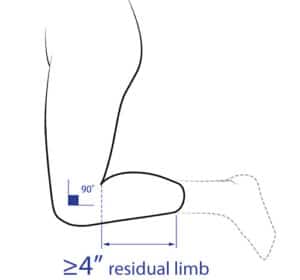 iWALK crutch is becoming increasingly popular as a daily living aid and a transitory / training device for new below knee amputees. The only special requirements for below knee amputees are that you have a minimum of 4” (10cm) of residual limb and you can tolerate weight on your existing shin. Above knee amputees cannot use the iWALK crutch without a prosthetic assistive device.
iWALK crutch is becoming increasingly popular as a daily living aid and a transitory / training device for new below knee amputees. The only special requirements for below knee amputees are that you have a minimum of 4” (10cm) of residual limb and you can tolerate weight on your existing shin. Above knee amputees cannot use the iWALK crutch without a prosthetic assistive device.
New amputees – iWALK crutch is used after amputation instead of crutches or a wheelchair. It allows you to maintain muscle strength and train in the use of a prosthetic leg prior to your permanent prosthetic. It also allows you to maintain your lifestyle when you cannot tolerate your prosthetic or it’s being repaired or resized.
Existing amputees – iWALK crutch excels at providing hands free mobility for those times you don’t want to use your prosthetic leg. You can walk in comfort and stability. You can do many things where you don’t want to expose your expensive permanent prosthetic to water or contaminants. Donning and doffing is faster than for non-amputees because you don’t need to unbuckle the lower straps as your foot will not interfere with slipping directly into the crutch.
See more information regarding how iWALK crutch is changing mobility for below knee amputees by clicking here.
To see testimonials from below knee amputees already using iWALK crutch, click here.

Will the iWALK crutch fit you? Find out by visiting our Sizing page
Summary
iWALK crutch can give you back the mobility you lost due to your injury. What it can’t do is give you something that you didn’t already have, so if you couldn’t walk normally pre-injury, then iWALK crutch probably isn’t going to work for you.
So if you’ve read all of the qualifications and you’ve determined you’re a good candidate, the next crucial step is to follow our instructions for Fitting and First Use. Do this, and you’ll be iWALKing with safety and comfort in no time.
Still have questions or concerns?
We’re here to help. Check our Frequently Asked Questions or contact us.

